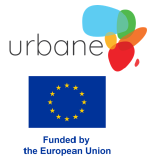Antoine Chabi's farm
Agroecology, diversity of crops, soil fertility, pasture
Antoine Chabi
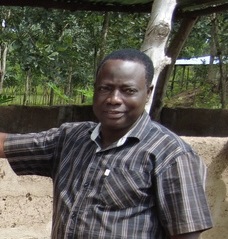
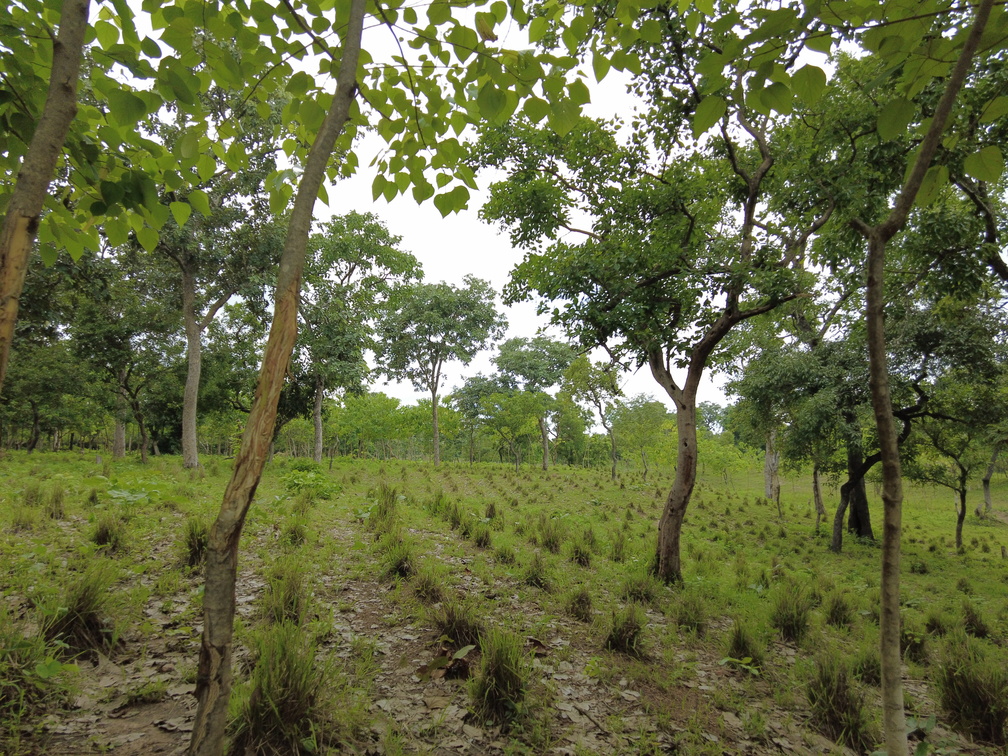
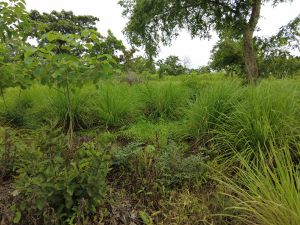
Antoine Chabi, a farmer in Boko Sakaro, Benin, cultivates his land and raises livestock according to agroecological principles. Here is a portrait of his farm.
Context
The farm
- Name: Antoine Chabi.
- Location: Boko Sakaro (Boko 2), Benin.
- Established: 2019.
- Cultivated Area: 25 hectares.
- Soil Texture: Sandy loam.
- Number of people working on the farm: 8.
- Productions:
- Vegetable crops: Tomato, chili pepper.
- Fruit and Forest Trees: Cashew, African locust bean, papaya, moringa, teak. Tree diversity is primarily for parcel boundaries rather than production.
- Forage crops: 20 hectares of Panicum C1 and 5 hectares of soy, corn, sorghum, moringa, and sunflower.
- Livestock: 60 cows, between 300 and 400 chickens and guinea fowl.
- Climate: Boko has a savanna climate with dry winters (classified as Aw in Köppen-Geiger). The area experiences significant rainfall, even in the driest month. The average annual temperature in Boko is 26.8°C, with average annual rainfall of 1,023.6 mm. The Harmattan, a constant, hot continental wind from the northeast, brings cooler and drier conditions, sometimes lowering temperatures to as low as 4°C.
- Background and education: Growing up surrounded by animals due to his father’s work as a veterinarian, Antoine Chabi developed a passion for animal husbandry early on. Although he did not pursue formal studies in agronomy or animal husbandry and faced several setbacks, he compensated through extensive hands-on experience. His determination has led him to establish multiple farms over the years. His first venture, in Bohicon, marked the beginning of his journey. Today, he manages five diverse farms, showcasing his capacity to turn ideas into sustainable success.
Motivations and Goals
Antoine’s interest in agroecology emerged with the support of the agricultural consultancy firm Monrado. For Antoine, agroecology represents a new and more effective way of achieving his initial goal of dairy production. This led him to establish forage production plots to support this objective.
Farm History
- Antoine began his operations with cattle farming. However, challenges with forage availability, grazing land, and conflicts between farmers and herders soon forced him to modify his approach.
- His initial attempt at forage production plots was not successful; the limited size of the pastures meant frequent movement of the herds, which hampered milk production. Initially, he had only one hectare of pasture, but with local cattle breeds that were better suited for meat than milk, he had to rethink his strategy.
- To improve forage production and avoid overgrazing, he reduced grazing times and allowed more time for the pastures to recover. He also consulted with a dairy farm in Lokossa, which uses Brazilian cattle breeds that produce 20-25 liters of milk per cow per day, to refine his strategy. Previously, Antoine had relied solely on hardy local breeds that produce low milk yields but are well adapted to the local environment.
- The free-grazing system also led to conflicts between farmers and herders, as animals often caused damage to crops. To address this, he divided his 20-hectare farm into two sections:
- Zone A: 10 hectares of open grazing, sectioned with hedgerows. Currently, there is a significant issue with overgrazing, and vegetation regeneration is minimal.
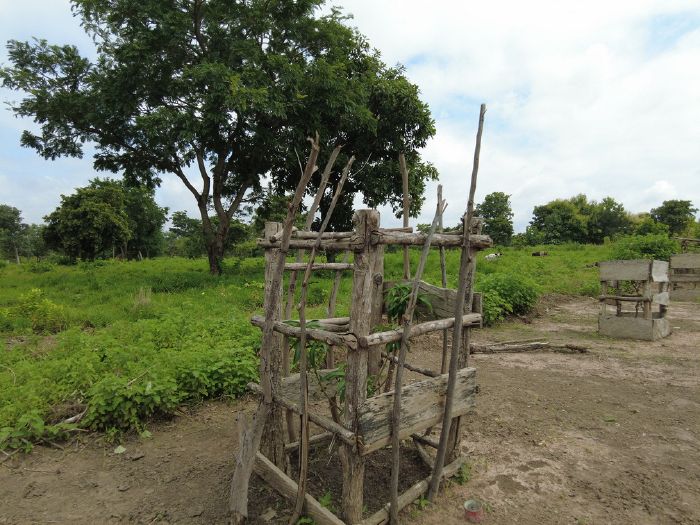
- Zone B: Fully fenced to prevent grazing by outside animals and roaming. All manure and slurry (from cattle and poultry) is spread around the plants in this area. Animals are allowed into Zone B for only a few hours to prevent overgrazing.
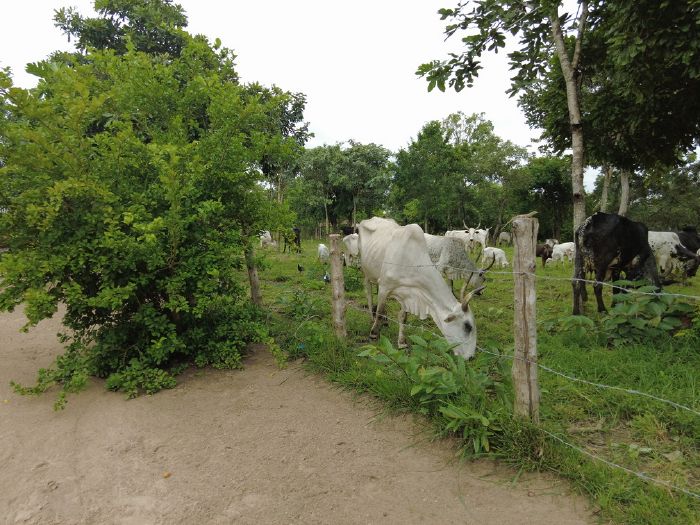
- Subsequently, he developed several additional activities alongside the dairy production workshop. He owns 60 local breed cows for meat production and also raises poultry (350 chickens/guinea fowl) in a semi-enclosed agroforestry system.
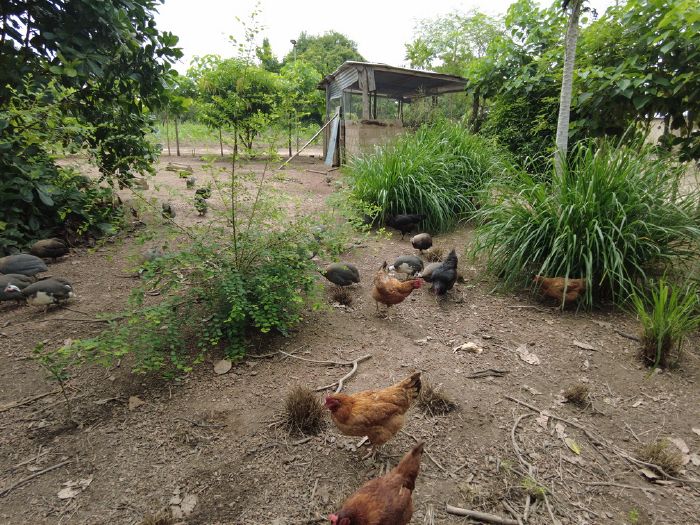
Agronomic aspect
Animal Production
Cattle
- The main activity is cattle farming. Antoine owns 60 cows, primarily for milk production and then for meat. The cows are local breeds, Borgou and Goudani, producing an average of 2 liters of milk per cow per day. The goal is to produce milk with a rich flavor. They are experimenting with 2 Brazilian cows, which produce milk with less flavor but have a higher yield, at 25 liters per cow per day.
- Once a year, the calves are placed in dry-season enclosures for feeding. Due to limited vegetation, it’s challenging to adequately nourish them, resulting in leaner calves.
Poultry
- The secondary activity is poultry farming, with 300-400 chickens and guinea fowl.
- The growth cycle for chickens follows this pattern on the farm:
- There is a coop in the house for chicks and hens.
- After 2 weeks, they move to larger coops and are then released into designated outdoor areas.
- Guinea fowl are raised separately in 50-meter enclosures.
Panicum grass is planted inside enclosures for poultry feed, with hens laying eggs among the vegetation. They sell chickens according to hatch rates to free up coop space.
Agricultural Practices
Soil Fertility Management
A significant amount of organic matter is added to crops: poultry manure and cow dung are used to maintain and improve soil fertility and structure. Antoine describes it as an integrated farm where everything is utilized and produced on-site. The use of cow dung has improved forage crop yields.
Soil Tilling
- Corn is traditionally grown using ridge planting.
- Plowing and weeding are conducted for sorghum.
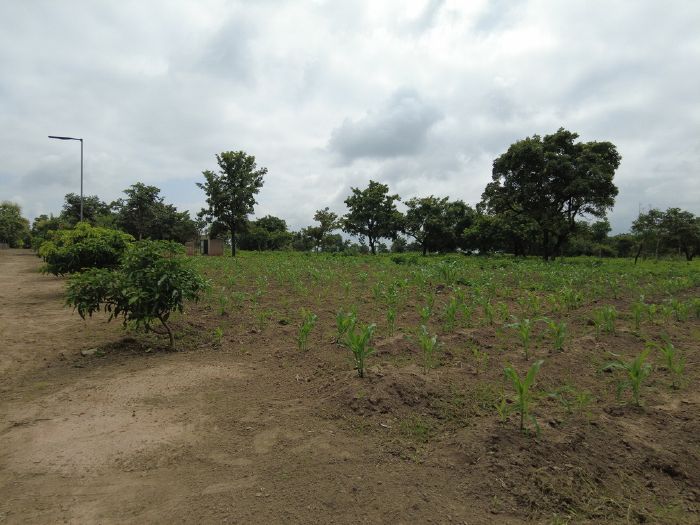
Pest Management
The main issues Antoine faces are poultry diseases. When multiple animals get sick, a vet is called. The most common diseases are coccidiosis, avian pox, and Newcastle disease. If treatments are ineffective, infected animals are culled.
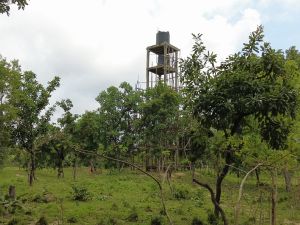
Strategies for Overcoming Constraints
- Water and Wind Erosion: Anti-erosion structures are set up in key areas of the farm. Panicum C1, a highly palatable forage with deep roots, is used to reduce erosion by stabilizing the soil.
- Grazing Impact on Parcels: Fences are erected around parcels to restrict cattle access, enabling better regeneration of cultivated pastures.
- Invasive Hyptis suaveolens: Manual weeding is the only effective control, though it requires significant labor.
- Dry Season: If the pump fails, backup reservoirs are available.
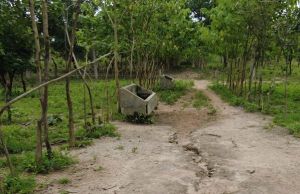
Water System
The farm has two boreholes and watering troughs throughout. A plumbing system has been set up for water distribution.
Social Aspect
Satisfaction and Dissatisfaction
- Workload: 7. Antoine manages five farms and is not always on-site, but interns help with the workload.
- Work Comfort: 8. Employees are housed and fed on the farm, with all necessary care provided for a good quality of life.
- Work Environment: 9. Employees live on-site in nature, creating a pleasant living environment.
- Living conditions: 9. Pleasant in the countryside, the workers are housed on-site and provided with food.
Scale of 1 = very dissatisfied, to 10 = very satisfied.
Environment
Technical Assistance
The farm is supported by advisors from the Monrado consulting firm but doesn't receive additional advisory support.
Cooperation
The farm is not part of any cooperative and doesn't collaborate with other farmers.
Economic Aspect
Charges
- Monthly salary: The 6 employees are paid the agricultural minimum wage (SMIC agricole), which is approximately 50,000 FCFA per month.
- Land: 1 hectare = 450,000 FCFA.
- Equipment: Fence made of barbed wire + posts + labor: 10 million FCFA. Very satisfied with the investment as it has reduced problems related to diseases caused by free-roaming animals. The animals are well-fed, there are no more conflicts, and stress is no longer an issue.
- Labor and animal handling: From 100,000 to 7,000,000 FCFA.
- Soybean cultivation with manual weeding (500,000 FCFA for 2 hectares): Up to 25 sacks harvested, with each sack costing 25,000-40,000 FCFA.

Investment
- Electricity: Investment of 2,000,000 FCFA to power everything with solar panels.
- Borehole: 2,600,000 FCFA for all installations related to the borehole.
- Land: No total estimate, as the real estate is being built gradually (45,000 FCFA per hectare for 25 hectares).
Revenues
Income: 6-7 million FCFA/year from sales of milk, meat, poultry, eggs, and honey.
Sales Strategy
Wholesalers purchase based on their needs, with irregular visits to the farm. The goal is to process products on-site to retain added value: beekeeping and small dairy production.
Farmer’s Advice
Agriculture is an excellent sector, but success requires willpower, patience, and perseverance.
Future Plans
- Development of a honey production workshop: 300 beehives with shelters (to protect the hives) and the installation of a honey house on the farm to produce, process, and jar the honey on-site. The hives will be installed along the riverbank.
Currently, the project is under development: they are planting moringa hedges to create forest corridors: 4 meters between the moringa trees, and they are planting sunflowers between them. The hives will be placed 15 meters apart, or 30 meters apart if the density is too high. The bees will be Apis mellifera and African bees. The honey will be used for consumption and to produce cosmetics.

- Development of a specialized vegetable farming workshop: Production of tomatoes and peppers. Currently, the project is at the experimental stage, and they are conducting small-scale trials.
- Developing dairy and meat processing workshops on the farm to retain the added value of the products and create local employment.
Photo gallery
Sources
Interview with Antoine Chabi conducted in August 2024 by the team of Ver de Terre Production as part of the Urbane project.
Photo credits: Ver de Terre Production.
This page was written in partnership with the Urbane project and with the financial support of the European Union.








